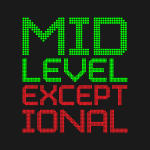Exploring the “30 Day Rule” and its Effectiveness
After years of speculation, the Minnesota Timberwolves have traded Kevin Love. One of the league’s top power forwards will join LeBron James in Cleveland, making the Cavaliers an instant contender.
The package received by the T-Wolves is headlined by this year’s number one overall pick Andrew Wiggins. It is rare to see such a high draft pick traded so quickly and it is particularly strange when the player is a coveted prospect with years of hype and intrigue.
Wiggins signed with the Cavaliers on July 25th for $5.5 million, enacting the NBA’s “30 day rule.” The rule (Article VII, Section 8 (d)(i) for those interested) states that a rookie can not be traded within 30 days of signing a contract, meaning that Wiggins could not be officially traded until August 23rd.
The Cavs did not waste any time dealing away Wiggins as the trade was completed as soon as possible under the Collective Bargaining Agreement.
The trade rules for rookies are a bit different than those of free agents. An NBA team can not trade a recently signed free agent until the longer of December 15th or three months after the official signing. This provides a bit of safety for free agents as they know that they will at least be in town for a few months. The logic behind this rule is that a player signs with an NBA team because he wants to be there so the team should not be able to trick him into signing to use him strictly as trade bait.
As Andrew Wiggins found out the hard way, rookies do not have this protection.
Almost as soon as the trade could become official, it did. We all figured it was a matter of time, yet this year’s number one overall pick probably spent the better part of the past 30 days wondering what team he’d begin his career with. It is a stressful situation for any player, let alone a 19 year old.
The past month seemed like more of a waiting game than anything else.
What is the point of this rule? Is it helping anyone?
The main purpose of the rule is to prevent teams from using a rookie contract to manipulate the salary cap. Signing Wiggins helped the Cavaliers make the money work, as his salary allowed them to absorb Love’s 2014-2015 salary of $15.7 million in a way they could not with just his draft rights.
Rookie contracts are largely fixed; variations do occur but there is a salary scale and picks are not allowed to negotiate with teams other than the one that holds their rights. This is a valuable tool to a team looking to make a trade and the 30 day rule is in place to prevent teams from taking even more advantage of this.
Even with the rule in place, the Cavaliers used the system to land Love. 30 days beginning in late July is not a long time, particularly when you consider that the market is relatively quiet and the teams are not even in training camp now and that the Cavs waited nearly a month after the draft to sign Wiggins. By that point, a vast majority of the pieces in free agency have fallen and teams are mostly set with their roster. It seems like the deal was in place for most of the 30 days and the waiting period was simply a formality.
The rule appears to be more effective in theory than it is in form. How much protection does a month really give a rookie during the middle of the summer? Additionally, if a team wants to manipulate the cap they will be more than happy to wait just 30 days to do so.
This being said, we did see some teams try to make a move at Love while the Cavs were forced to wait. The Warriors hung around and it looks like the Phoenix Suns even made a late push as the 30 days began to expire. The rule’s ineffectiveness lays at the essence of why the Warriors and Suns were unsuccessful; it is awfully tough to beat an offer centered around a prized number one draft pick on a rookie contract.
If the goal of the rule is to keep draft picks with the team that drafted them and to prevent salary cap manipulation, the timing needs to change.
Treating rookies as free agents in the sense that you can’t trade them until December 15th would probably help. Under this scenario, the Cavaliers likely would not have been able to land Love until mid-season at the earliest. A lot could have changed during this time and maybe the outcome would have been Wiggins staying in Cleveland.
Love could have grown increasingly impatient and demanded a move immediately while those extra months could have convinced the Warriors to throw in Klay Thompson to get a deal done.
Would the Cavs have chosen to undergo such a massive roster change midseason or would they have waited until next summer and taken their chances in free agency? What if they had gotten out to a scorching start with Wiggins playing extremely well? Getting a superstar like Love would still have been a priority but those developments would make pulling the trigger more difficult.
Yes, it’s unlikely, but maybe a strong start to the season causes Love to ease up on his trade demands. This probably wouldn’t happen here, as Love’s frustration is not a new development, but it could be relevant in other scenarios with different players.
It is reasonable to believe that the “30 Day Rule” will be reviewed during the next CBA negotiations. This trade will be the perfect case study of the ineffectiveness of the rule and hopefully the timing is tweaked enough to allow it to be successful.


